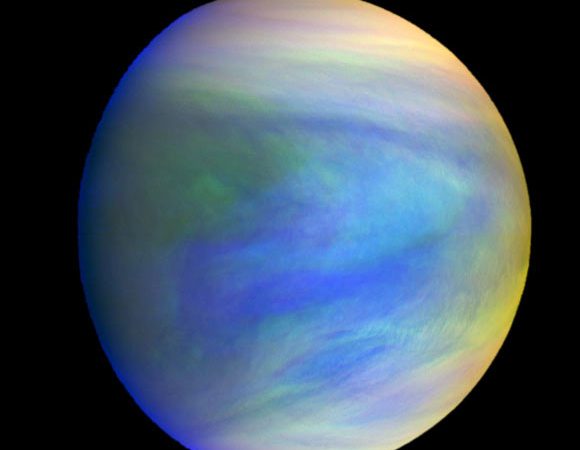A new analysis of archival data from NASA’s Mercury Surface, Space Environment, Geochemistry and Ranging (MESSENGER) spacecraft reveals a sudden rise in nitrogen concentrations at about 50 km (31 miles) above the surface of Venus, demonstrating the planet’s atmosphere isn’t uniformly mixed.
Source: Sci News
A defining characteristic of the planet Venus is its thick, carbon dioxide-dominated atmosphere.
Despite over 50 years of robotic exploration of Venus, including 13 successful atmospheric probes and landers, scientific knowledge of nitrogen, the second most abundant compound in the Venusian atmosphere, is still uncertain.
To fill this gap, Dr. Patrick Peplowski from the Johns Hopkins University Applied Physics Laboratory and colleagues used data from the neutron spectrometer aboard the MESSENGER spacecraft, which sailed above Venus in June 2007 for its second flyby before veering toward Mercury.
The researchers ran a computer simulation that divided the planet’s 100-km- (62-mile) thick atmosphere into bands in which they could manipulate the nitrogen concentration and realistically model how many neutrons would come streaming out to the spacecraft above.
When they compared their models with the MESSENGER data, they found the best match was when atmospheric nitrogen made up 5% of the volume, about 1.5 times that measured lower in the atmosphere.
And all of the neutrons came from a region between roughly 60 and 100 km (37-62 miles) above the surface — exactly where there had been the greatest uncertainty.
Nitrogen concentration through Venus’ atmosphere; the red line is a trend line fitted to data from multiple missions, including the MESSENGER data, which was collected between 60 and 100 km high. Image credit: Johns Hopkins University Applied Physics Laboratory.
“That was very much a stroke of luck,” Dr. Peplowski said.
“Why nitrogen increases at higher altitude remains unknown. The discovery raised more than a few eyebrows, but not because people were blown away.”
“Many scientists seemed surprised that this was even something worth investigating.”
“The notion that there’s a higher nitrogen concentration in the upper atmosphere than in the lower was outside people’s range of thought.”
The new results underscore the caution planetary researchers need when drawing conclusions about atmospheric data, especially with the growing interest in planetary atmospheres in other solar systems.
“We’re still learning fundamental things about Venus and its atmosphere, and it’s our next-door neighbor,” Dr. Peplowski said.
“That scientists can speak with confidence about the atmospheres of exoplanets that are hundreds or thousands of light-years away is worth questioning.”
The findings were published in the journal Nature Astronomy.
Source: Sci News

































Leave a Comment
You must be logged in to post a comment.